
Deborah Ann Gibson is an American singer, songwriter, and actress.

"New Romantics" is a song by the American singer-songwriter Taylor Swift, who wrote it with the producers Max Martin and Shellback. The title is a reference to the New Romantic cultural movement of the 1970s and 1980s; the new wave musical style of those decades influenced the song's synth-pop production and pulsating synthesizers. The lyrics are about reigniting one's hopes and energy after emotional hardships.

A Private Heaven is the fifth studio album by Scottish pop singer Sheena Easton, released on 21 September 1984 by EMI America Records. The album featured two US Top 10 hit singles: the lead single "Strut" and the controversial "Sugar Walls". "Swear", a third single, peaked at No. 80.
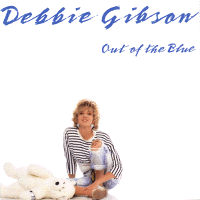
Out of the Blue is the debut studio album by American singer-songwriter Debbie Gibson, released on August 18, 1987, by Atlantic Records. The album received favorable reviews from music critics and sold more than three million copies in the United States and five million copies worldwide.

Anything Is Possible is the third studio album by American singer-songwriter Debbie Gibson, released on November 20, 1990, by Atlantic Records. The album features a collaboration between Gibson and veteran Motown songwriter Lamont Dozier, who co-wrote four of the album's tracks including the title single. "Stand Your Ground" marked Gibson's final collaboration with longtime producer Fred Zarr.

Body, Mind, Soul is the fourth studio album by American singer-songwriter Debbie Gibson, released on January 19, 1993, by Atlantic Records. The album failed to find favor with the record buying public and missed out on the U.S. top 100, peaking at No. 109, and also in the UK when it was released a few months later. However, the album was a hit in Japan, peaking at No. 13 on the charts. It was Gibson's last studio album under Atlantic Records.

Deborah is the sixth studio album by American singer-songwriter Debbie Gibson. Released on June 11, 1997, under Gibson's own record label, Espiritu Records, this was the first release where the singer was credited with her full name. The original release sold to Debbie Gibson International Fan Club (DGIF) members includes her covers of "People" and "Don't Rain on My Parade" from Funny Girl, as she starred in the off-Broadway production tour of the musical the previous year. The second release for the general market replaced the Funny Girl covers with "Only Words" and a re-recording of Gibson's 1987 debut single "Only in My Dreams".
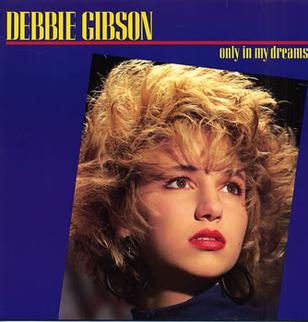
"Only in My Dreams" is the debut single by American singer-songwriter and actress Debbie Gibson, who was 16 years old at the time of its release. The song was officially released by Atlantic Records on December 16, 1986. It was later remixed and re-released in February 1987. The song showcased Gibson's songwriting skills as she solely wrote it, with Fred Zarr producing it.

"Shake Your Love" is a song by American singer-songwriter and actress Debbie Gibson. The song was released as the second single to her debut studio album Out of the Blue (1987), and the first internationally by Atlantic Records in September 1987. Like the rest of the album, the song was solely written by Gibson and produced by Fred Zarr.

"Out of the Blue" is the third single by American singer-songwriter-actress Debbie Gibson. The title track of her debut album, the song was written by Gibson and co-produced and co-arranged with Fred Zarr, with Douglas Breitbart as executive producer. Released as a single in January 1988, "Out of the Blue" gave Gibson her highest chart placing at the time by reaching No. 3 in the U.S. In the UK, it did slightly less well than her two previous singles, stalling at No. 19.

"Staying Together" is the fifth single from American singer-songwriter-actress Debbie Gibson, and the fifth released in support of her album Out of the Blue. However, it did not perform as well as any of the previous singles, stalling at No. 22 on the Billboard Hot 100. The single reached No. 53 in the UK in 1988. Written by Gibson and originally co-produced and co-arranged with Fred Zarr, this track was edited and co-produced for the single by then-BiZarr Music engineer-understudy Phil Castellano.

"Lost in Your Eyes" is a song by American singer-songwriter Debbie Gibson, released as the first single from her second album, Electric Youth (1989).
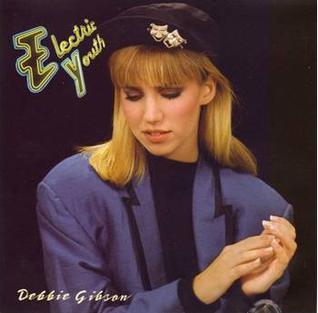
"Electric Youth" is a song by American singer-songwriter-actress Debbie Gibson. The song was solely written by Gibson and produced by Fred Zarr. It was released on March 24, 1989 as the second single from the album of the same name (1989) by Atlantic Records. Gibson had written the song as a statement about how young people of that era were seen and how their ideas were often ignored. As a teenager herself, she was a firm believer that the beliefs and ideas held by young people were just as important as those held by adults and the song reminded people of this. It also reminded them that the current youth would become the next generation of adults.

"No More Rhyme" is a song by American singer-songwriter and actress Debbie Gibson. The song was released as the third single from her sophomore studio album Electric Youth (1989) only in North America, Australia, and Japan. Like all of the album, the song was solely written by Gibson. Frequent collaborator Fred Zarr produced the song. "No More Rhyme" was not issued a single in Europe, where the next single "We Could Be Together" was released instead. The song is a pop ballad.
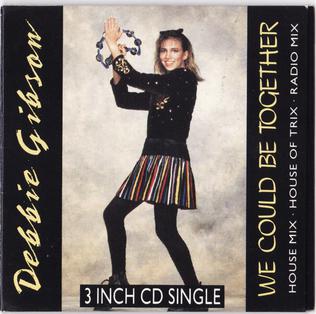
"We Could Be Together" is the ninth single by American singer-songwriter-actress Debbie Gibson, and the fourth from the 1989 album Electric Youth. Produced by Gibson and Fred Zarr, the single was edited from its original recording. This song featured the talents of Matt Finders. The single performed better overseas than at home, peaking at No. 22 in the United Kingdom but stalling at No. 57 in Australia and No. 71 on the Billboard Hot 100 in the United States.

"Without You" is a single by American singer-songwriter Debbie Gibson. Written by Gibson and Tatsuro Yamashita, the single was released exclusively in Japan in 1990 by Warner Pioneer under the Atlantic label. It was featured in the 1990 TBS drama series Otoko ni Tsuite. Originally released as a stand-alone single, "Without You" was included as a bonus track in the Japanese releases of Gibson's 1990 album Anything Is Possible and 1995 Greatest Hits album. It was also included in her 2017 box set We Could Be Together and the 2021 Deluxe Edition release of her 1989 album Electric Youth.
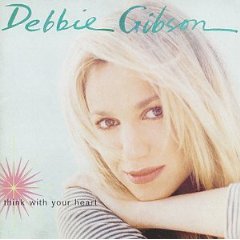
Think with Your Heart is the fifth studio album by American singer-songwriter Debbie Gibson, released on July 4, 1995, by SBK Records, a division of EMI Records. The album sold only 25,000 copies in the U.S., but was a minor success in Japan, peaking at No. 46 on Oricon's album charts, as well as some success in South Africa. The album was produced by Gibson herself, and largely recorded with a live orchestra and shows the maturity of Gibson as a musician.

American singer-songwriter Debbie Gibson has released eleven studio albums, six compilation albums, one box set, 46 singles, three video albums, and 31 music videos.

Ms. Vocalist is the ninth studio album by American singer-songwriter Debbie Gibson. Released on November 3, 2010 exclusively in Japan by Sony Music Japan, the album features Gibson's English-language covers of popular male-oriented Japanese songs. In addition, the album includes a duet with Mr. Big vocalist Eric Martin and two re-recordings of her number one hit "Lost in Your Eyes", with one version sung in Japanese. A deluxe edition release features four extra re-recordings of songs from her 1987 debut album Out of the Blue, plus a DVD featuring interviews and the music video for "I Love You".

The Body Remembers is the tenth studio album by American singer-songwriter Debbie Gibson, released on August 20, 2021, independently by her own label StarGirl Records. It is her first studio release to feature completely original songs since her seventh studio album M.Y.O.B. (2001).




















